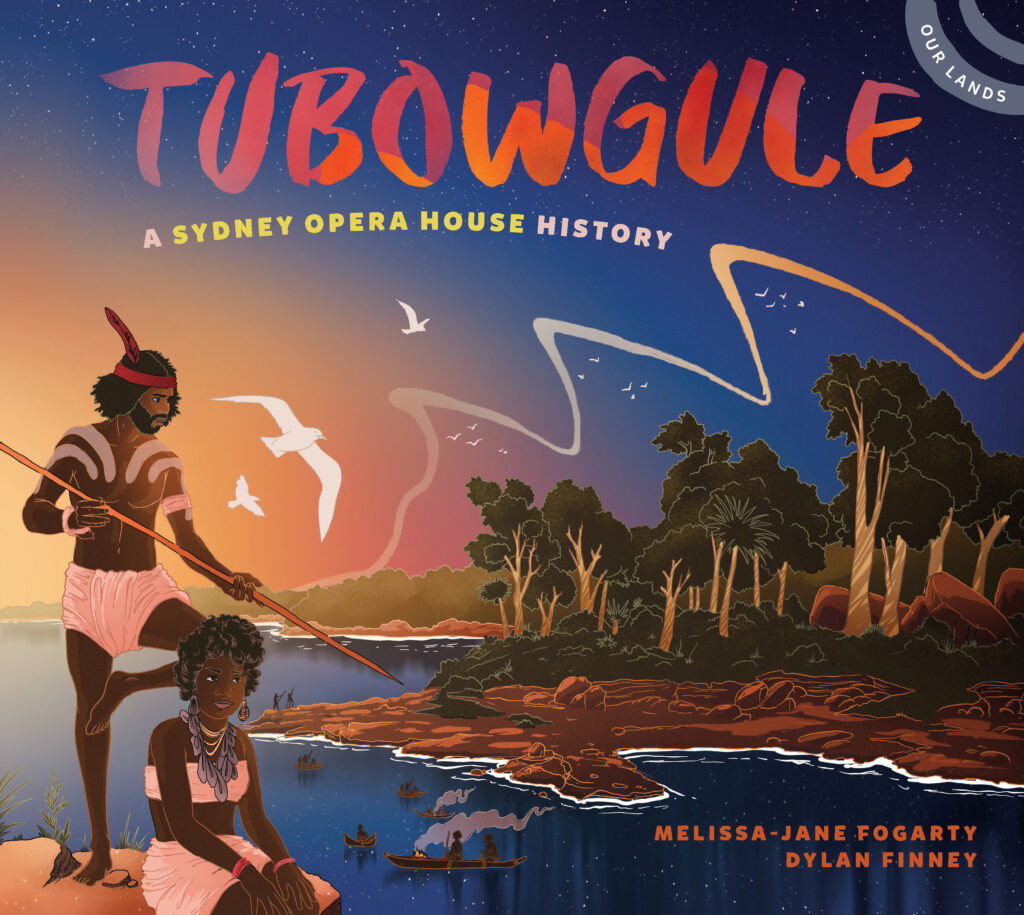
Tubowgule: A Sydney Opera House History
Melissa-Jane Fogarty & Dylan Finney
Hachette: 2025
ISBN: 978073442335
Age: 5+
Reviewed by Genevieve Young-Evans
Tubowgule (pronounced tube-uh-gahlee) is the story of a place with a long and rich history that has most recently become world-renowned through the construction of the Sydney Opera House. It is a thoughtful story that can be used by teachers to discuss colonisation and its impact. It is also a hopeful story that testifies to the resilience of First Peoples as well as the power and endurance of creative pursuits.
Melissa-Jane Fogarty’s thorough research means that kids benefit from all those quirky details about history that can be tricky to find! Some facts will probably even surprise parents such as the drawbridge that was once part of Fort Macquarie. For teachers the story of Tubowgule includes terms (e.g. ‘middens’ ‘mortar’) that are useful for kids to learn as they study the past, clear chronological treatment of the subject matter and discussion of the significance of a well-known place from a range of perspectives. The back pages also provide additional information that can help consolidate and extend student learning through, for example, elaboration of events discussed in the main text and the inclusion of additional Dharug words .
The artwork and design of the book is perfect for capturing young minds and concentrating their reading efforts. At every stage headings and dates make it particularly easy for kids to start navigating the chronological scope of the text. Full page spreads bring to life key historical moments while insets and symbols help to elucidate the complexities of the text. It is also beautiful! The colours are rich and the tones deep. I was particularly struck by the variation and beauty of the skies in many scenes, which mirror the hopeful and creative tone of the text.
This non-fiction book balances information and creativity at every opportunity. It is a great resource for teachers and parents to discuss the past and its impact as well as the importance of places and the way they relate to people’s pasts and future.
